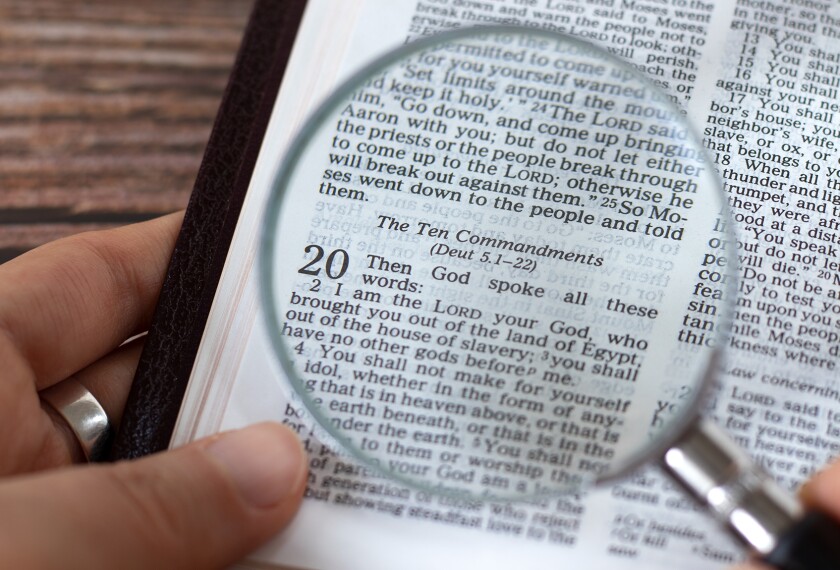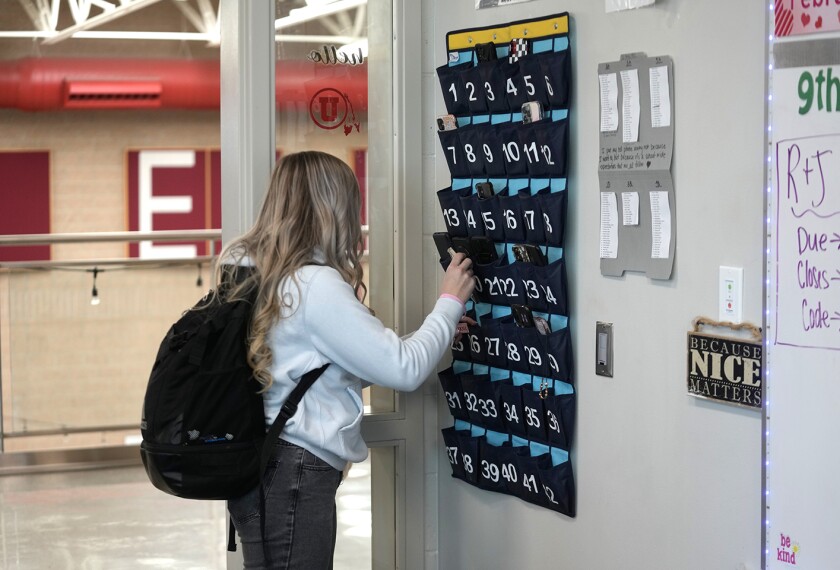The share of America’s school-age children attending public schools ticked slightly downward every year from 2014 to 2022—just before a wave of new universal private school choice programs began to further complicate the K-12 landscape. But public schools continue to enroll the overwhelming majority of America’s young people.
That’s the takeaway from an Education Week analysis of U.S. Census Bureau survey data breaking down K-12 enrollment by type of school. These data are publicly available but haven’t been widely circulated in a digestible format until now.
The percentage of students in public and private schools didn’t change dramatically throughout the 2010s and early 2020s. But public schools lost a bit of ground during that period, while private schools gained some.
In 2022, the most recent year for which Census data were available, 84 percent of the 54 million U.S. children ages 5 to 17 attended public schools, which include traditional public schools as well as charter schools. Another 11.8 percent attended private schools.
The remainder is listed as attending neither, and could have dropped out of school, not started attending school yet, or participated in homeschooling, for which data collection is inconsistent state to state.
Those figures represent a small but notable shift that’s taken place in recent years. A decade earlier, in 2012, the share of public school students was 86.3 percent, and the share of private school students was 10.6 percent.
The trend isn’t particularly surprising to Chris Lubienski, a professor of education policy at Indiana University. What surprised him, instead, was that the drop in the share of children attending public schools wasn’t steeper as the private school choice movement grew throughout the 2010s.
“We have a whole industry of advocacy groups promoting private school choice and attacking the viability of public schools, strongly and falsely suggesting to parents that public schools as a whole are failing,” Lubienski said. “Given that, if anything, one might expect to see more of a hit to public schools.”
Here are a few additional takeaways from these numbers.
Data showing the impact of private school choice are still emerging
Whether private schools will gain a bigger enrollment share in the coming years remains to be seen. Twelve states now offer or will soon roll out some form of universally accessible private school choice, including education savings accounts, vouchers, and tax-credit scholarships—all of which allow parents to spend public funds on private educational options of their choosing.
Recently available data from private school choice programs with expanding eligibility show that the majority of recipients were already attending private schools before taking advantage—which means their participation won’t affect the share of students attending public or private schools.
But that could change as eligibility expands. More than 1 million students accessed a state-funded private school choice offering in 2024, according to figures recently published by EdChoice, the leading advocacy organization for private school choice. Just five years earlier, the number was less than half a million, according to the organization.
Arizona, soon to enter its second school year with a universally accessible education savings account offering, is currently confronting a budget crisis as a result of 75,000 students getting ESA funds, exceeding some early estimates. Those numbers appear poised to grow in Arizona and other states that have followed Arizona’s lead in opening their private school choice programs to virtually all students.
The number of school-age children has grown—but that will change
The total number of children ages 5 to 17 fluctuated throughout the time period for which Census data are available. Between 2010 and 2022, the total number increased slightly, from 53.8 million in 2012 to 54.2 million in 2022.
Demographics experts and federal statisticians, however, anticipate those numbers will drop sharply in the coming years because recent generations of young adults are having fewer children than their parents and grandparents.
The pandemic appears to have accelerated pre-existing trends
Until 2020, the percentage of students attending public schools never dropped by more than one-fifth of 1 percent from one year to the next. But starting in 2020, the drops were slightly steeper: 1.1 percent from 2019 to 2020, 0.7 percent from 2020 to 2021, and 0.5 percent from 2021 to 2022.
The rate of growth for the share of students attending private schools was slightly faster during the same period. Prior to the pandemic, it had never grown more than 0.86 percent from one year to the next.
But from 2019 to 2020, the share of students attending private schools grew by 3.4 percent. From 2020 to 2021, it grew by 5.9 percent. And from 2021 to 2022, it grew by another 1.8 percent.
A growing percentage of children is unaccounted for in recent years
Prior to the pandemic, roughly 97 percent of children ages 5 to 17 were attending public or private schools. That percentage dropped in each of the three most recent years for which data are available.
In 2022, 95.9 percent of children ages 5 to 17 were attending public or private schools. That translates to 43,000 fewer students than in 2019.
Those numbers may be changing for a wide variety of reasons. Homeschool enrollment has grown considerably during the same period. Some students have skipped kindergarten. And some students have disappeared from the data altogether, according to research from Thomas Dee, an economist and education professor from Stanford University.
Disclaimer: The copyright of this article belongs to the original author. Reposting this article is solely for the purpose of information dissemination and does not constitute any investment advice. If there is any infringement, please contact us immediately. We will make corrections or deletions as necessary. Thank you.







